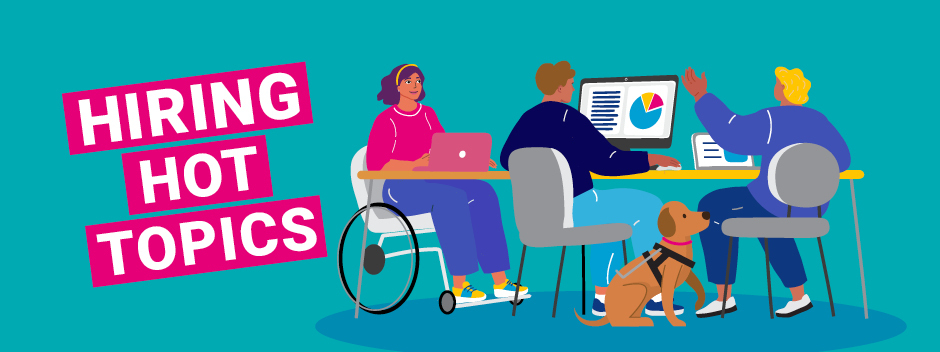About one in six Australians have a disability and, with only 53% of working-age Australians with disabilities employed compared to 83% of those without disabilities, they’re an undervalued source of talent for workplaces of all sizes.
Research shows most employers in Australia are open to hiring people with disability, but many lack the confidence to do so.
We’ve asked an employment lawyer for insights into equal opportunity and the reasonable adjustments that can help you support and harness the potential of every employee.
What is disability?
The Commonwealth Disability Discrimination Act provides a broad definition of disability, which includes physical, intellectual, psychiatric, sensory, neurological and learning disabilities.
Disabilities may be caused by accident, trauma, genetics or disease. They may be temporary or permanent, visible or invisible, but people with any of these disabilities are all protected from discrimination by law.
Andrew Jewell, Principal, Jewell Hancock Employment Lawyers explains that the primary source of protections for employees with disabilities in Australia is the Disability Discrimination Act.
“However, there are also protections for employees with disabilities in the Fair Work Act 2009 (Cth) and state anti-discrimination legislation.”
Understanding disability discrimination
Disability discrimination happens when people with a disability are treated less fairly than those without a disability.
In an employment context, this might include:
- Refusing or failing to employ a person because of their disability, even though it has no impact on their ability to meet the inherent requirements of the job;
- Giving an employee less favourable terms of employment, limiting access to training, or failing to consider them for promotion because of their disability;
- Firing an employee because of their disability
- Causing an employee to retire or resign because of their disability.
Many workplace practices and policies may not seem discriminatory at first glance. But indirect discrimination can still occur when employers put in place conditions, requirements or practices that appear to treat everyone the same, but actually disadvantage some people because of their disability.
For example, if an employer requires a d/Deaf employee to attend meetings without an Auslan interpreter, this could be indirect discrimination, as the employee may have difficulty participating in the meeting.
Jewell says that while disadvantageous treatment of employees with disability is generally unlawful, there are some exceptions.
“The most obvious example is where an employee’s disability prevents them from performing the inherent requirements of a role,” he says.
“For example, if an employee develops a disability that, on a permanent basis, means they cannot perform their role, a dismissal will not be considered illegal, essentially because the employeer had no other option.”
What are ‘reasonable adjustments’?
The Disability Discrimination Act requires employers to make reasonable adjustments so that a person with a disability can perform the inherent requirements of the job.
Reasonable adjustments may include modifying a workstation or equipment to make it accessible, swapping some duties among staff, or adding more flexibility to work patterns. Employers are obliged to make reasonable adjustments, unless they can prove that the adjustment would cause unjustifiable hardship.
“Unfortunately, what is considered reasonable is very dependent on the situation, such as the adjustments required, the cost and the size of the employer,” says Jewell.
What questions can you ask?
Not all disabilities are visible, but people are not obliged to disclose a disability to an employer unless reasonable adjustments are required to make the workplace safe for them.
“Employers can also only ask about a candidate’s disability if there is a need to make adjustments or if the disability would prevent the employee from performing the inherent requirements of the role,” says Jewell.
Where can you go for help?
Hiring people with disabilities presents great opportunity to businesses when employers can see the potential people with disability bring and understand their legal obligations.
The Australian Network on Disability, is a national not-for-profit that helps organisations engage with people with disability. It provides resources and tools for employers of all sizes to help them create an accessible workplace for all.
The Australian Human Rights Commission also provides an overview of the Disability Discrimination Act. It also includes more information about reasonable adjustments, so you can ensure employees with a disability can work safely and productively in your business and you’re ready to employ great people for your business.
Information provided in this article is general only, does not constitute legal advice and should not be relied upon as such. SEEK provides no warranty as to its accuracy, reliability or completeness. Before taking any course of action related to this article you should make your own inquiries and seek independent advice (including the appropriate legal advice) on whether it is suitable for your circumstances.

